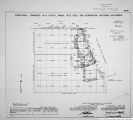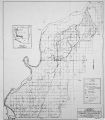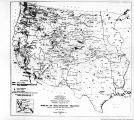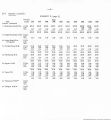| OCR Text |
Show -5- 228. At every point where either standard, township or section lines intersect the bank of a navigable stream, or any meanderable body of water, corner monuments at such intersections will be established at the time of running these lines. Such monuments are called meander corners. In the survey of lands bordering on tide waters, meander corners may be temporarily set at the intersection of the surveyed lines with the margin of mean high tide, but no monument should be placed in a position exposed to the beating of waves and the action of ice in severe weather. In all such cases a witness corner on the line surveyed, at a secure point near the true point for the meander corner, will be established. The crossing distance between meander corners on the same line will be ascertained by triangulation or direct measurement, and the full particulars will be given in the field notes. 229. Inasmuch as it is not practicable in public-land surveys to meander in such a way as to follow and reproduce all the minute windings of the high-water line, the United States Supreme Court has given the principles governing the use and purpose of meandering shores in its decision in a noted case as follows: Meander lines are run in surveying fractional portions of the public lands bordering on navigable rivers, not as boundaries of the tract, but for the purpose of denning the sinuosities of the banks of the stream, and as the means of ascertaining the quantity of land in the fraction subject to sale, which is to be paid for by the purchaser. In preparing the official plat from the field notes, the meander line is represented as the border line of the stream, and shows to a demonstration that the water-course, and not the meander line as actually run on the land, is the boundary. Railroad Co. v. Schurmeir, 7 Wall. 273, 286-287 (1868). 230. The engineer will commence the meander line at one of the meader corners, follow the bank or shore line, and determine the true bearing and measure |
| Source |
Original book: [State of Arizona, complainant v. State of California, Palo Verde Irrigation District, Coachella Valley County Water District, Metropolitan Water District of Southern California, City of Los Angeles, California, City of San Diego, California, and County of San Diego, California, defendants, United States of America, State of Nevada, State of New Mexico, State of Utah, interveners] : |






























































































































































































































































































































